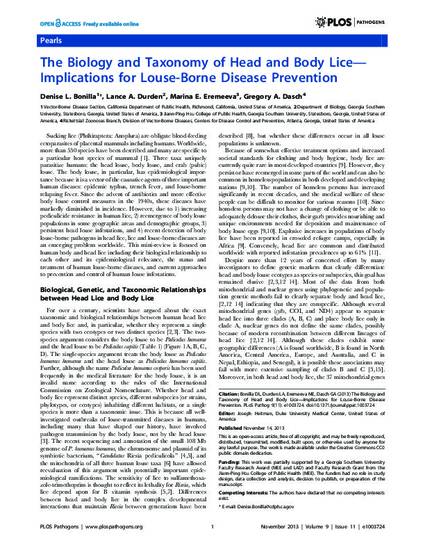
Sucking lice (Phthiraptera: Anoplura) are obligate blood-feeding ectoparasites of placental mammals including humans. Worldwide, more than 550 species have been described and many are specific to a particular host species of mammal [1]. Three taxa uniquely parasitize humans: the head louse, body louse, and crab (pubic) louse. The body louse, in particular, has epidemiological importance because it is a vector of the causative agents of three important human diseases: epidemic typhus, trench fever, and louse-borne relapsing fever. Since the advent of antibiotics and more effective body louse control measures in the 1940s, these diseases have markedly diminished in incidence. However, due to 1) increasing pediculicide resistance in human lice, 2) reemergence of body louse populations in some geographic areas and demographic groups, 3) persistent head louse infestations, and 4) recent detection of body louse-borne pathogens in head lice, lice and louse-borne diseases are an emerging problem worldwide. This mini-review is focused on human body and head lice including their biological relationship to each other and its epidemiological relevance, the status and treatment of human louse-borne diseases, and current approaches to prevention and control of human louse infestations.
Available at: http://works.bepress.com/marina_eremeeva/74/

This is an open-access article, free of all copyright, and may be freely reproduced, distributed, transmitted, modified, built upon, or otherwise used by anyone for any lawful purpose. The work is made available under the Creative Commons CC0 public domain dedication. Article obtained from PLOS Pathogens.